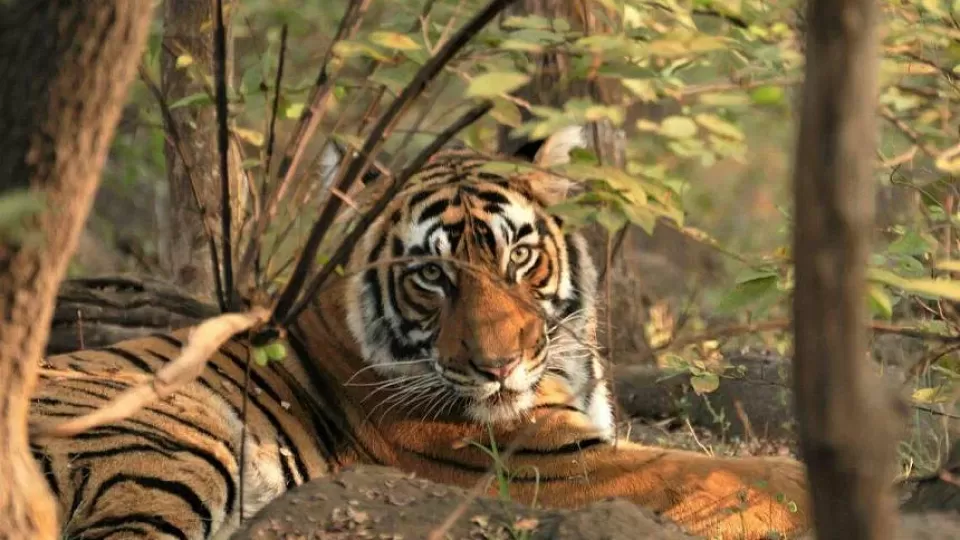April 28, 2023
WASHINGTON – Remarkably for a country of now over a billion people, India has managed to save the tiger from the brink of extinction.
Today, 50 years after the launch of its Project Tiger conservation programme, India is home to an estimated 3,167 tigers, or 70 to 75 per cent of the world’s wild tiger population.
Yet this success has spawned new challenges, while the old ones have not gone away. And aside from tiger reserves, biodiversity-rich wetlands and grasslands also need champions.
In India’s neighbourhood, tigers remain vulnerable. They are doing well in Nepal, but are functionally extinct in Laos, Cambodia and Vietnam – meaning there are so few that they never meet and thus cannot breed. They have made a small comeback in Thailand, but their status in Myanmar is unknown and most likely very tenuous.
And with tiger and associated wildlife populations increasing, human-wildlife conflict has increased, creating a management and community relations challenge.
One key ingredient in India’s success was to leave the tiger and its habitat alone, two of India’s foremost wildlife conservationists, Ms Belinda Wright and Mr Bittu Sahgal, told The Straits Times for its Asian Insider podcast.
“What worked was isolation for the tiger,” said Mr Sahgal, 75, who is, among other things, publisher and editor since 1981 of Sanctuary Asia, India’s leading wildlife magazine.
“It needed to be kept protected from not just humans, but human actions and activities, including intrusive farming; poaching, obviously; including the fires we would set; the noise we would make, and the disturbances we would cause to its prey.
“That (isolation) to my mind is one real lesson,” Mr Sahgal said.
Ms Wright, 70, who founded the Wildlife Protection Society of India (WPSI) – one of the country’s first non-government organisations to focus on wildlife protection and combating poaching – said wildlife protection laws were critical.
India’s Wildlife Protection Act became law in 1972. A year later, Project Tiger was launched. Today, India has 54 tiger reserves – up from nine at the start.
“Habitat protection was really a huge focus. Some villagers were moved out, and the idea basically in the early days was to leave the tiger alone. It’s a very, very tenacious and… solitary animal. Leave them alone, they will flourish,” Ms Wright said.
Up to around mid-2021, about 90,000 people had been moved out of tiger reserves, in most cases giving them better opportunities than they had living in remote forests, she said.
“These were all part of the best practices,” she said. “And then we had intelligence gathering, which was very new to wildlife, that started in the 1990s.
“What did not work was there was no focus on gaining the… trust and support of local communities,” Ms Wright said.
“Now there’s probably too much focus on managing tourism and not enough groundwork,” she said. “Because to save tigers, you need to understand what a tiger needs and you need to know the tiger’s domain well, and that’s lacking.”
All the measures, including moving villages out, proved effective because “everything came back”, Mr Sahgal said.
“The grasses came back, the water came back, the trees came back, the prey came back, the tiger flourished.”
In terms of human communities, it was a different matter. “We in fact found ourselves creating spaces where the local communities were really paying the greatest price,” he said. “Their cows were being killed, the fields were being raided by herds of deer or monkeys or wild pigs.”

Today, India has 54 Tiger Reserves – up from nine at the start. ST PHOTO: NIRMAL GHOSH
While India has a tradition of tolerance and coexistence with wildlife, human-wildlife conflict is increasing, with casualties on both sides. According to reports, at least 29 tigers were killed by poachers between 2019 and 2021, while over the same period tigers killed 125 humans.
Under wildlife laws, people are compensated for loss of life, livestock and crops. But the compensation often comes late or is inadequate.
“Of the human beings that are being attacked by tigers – and a few by leopards – and killed, injured and so on, almost all of them are out in the forest collecting fuel wood,” Ms Wright said.
They collect the wood to cook with or to sell to others to cook with.
Many villagers have little choice but to collect wood from the forest, she explained. “If the government or society can find a way of solving that one problem, it would make a huge difference to human-wildlife conflict.”
With climate change under way, there are new worries over the fate of fragile protected areas that will be affected by severe climate shifts. But Mr Sahgal is also hopeful.
India has an irreplaceable asset that very few countries now have – veneration of nature, he said. “The veneration of nature is something that is in our DNA.
“This is bigger than us, and the tiger is just a metaphor, as is the polar bear, as is the panda, as is the lion in Africa,” he said.

